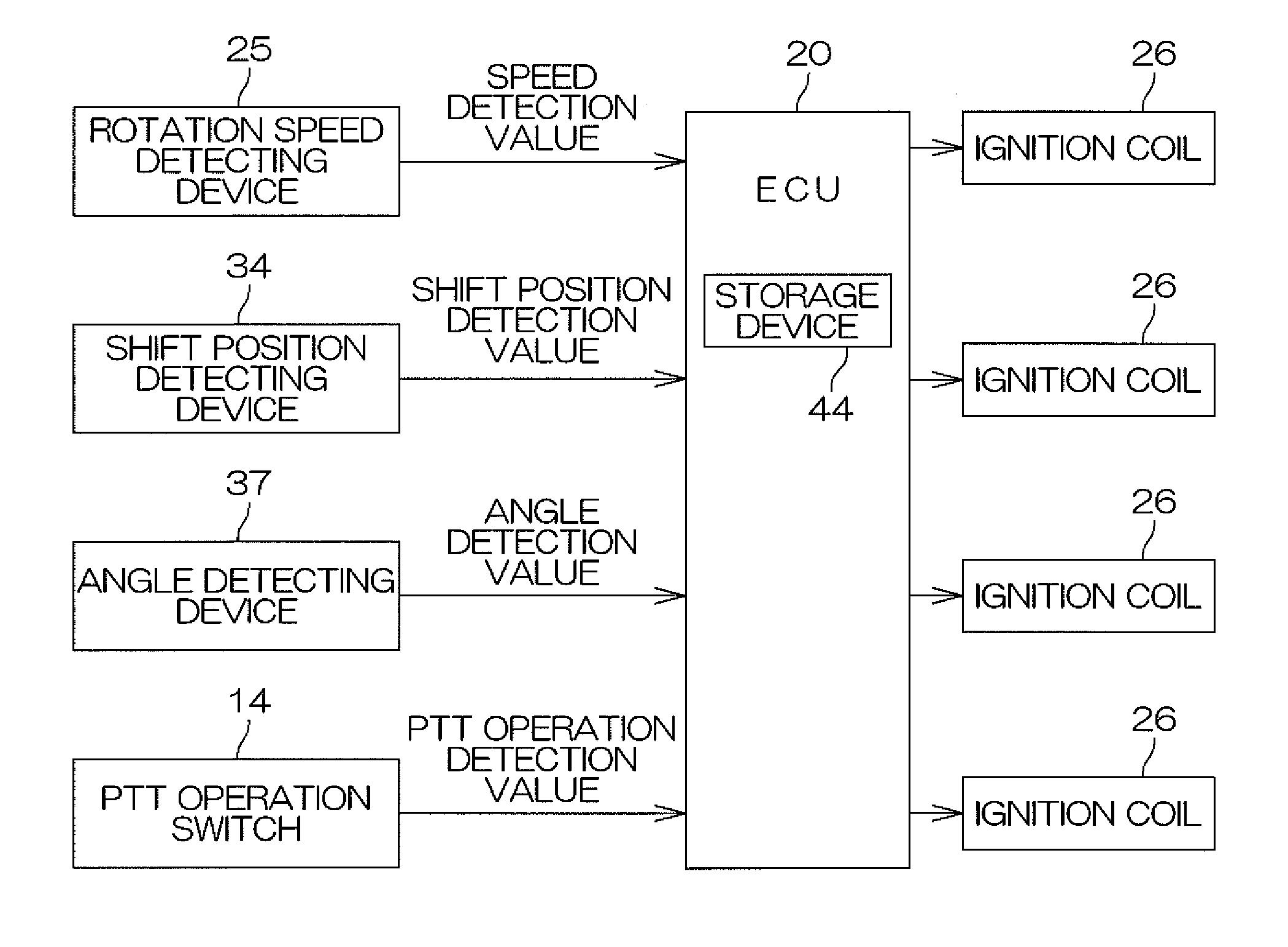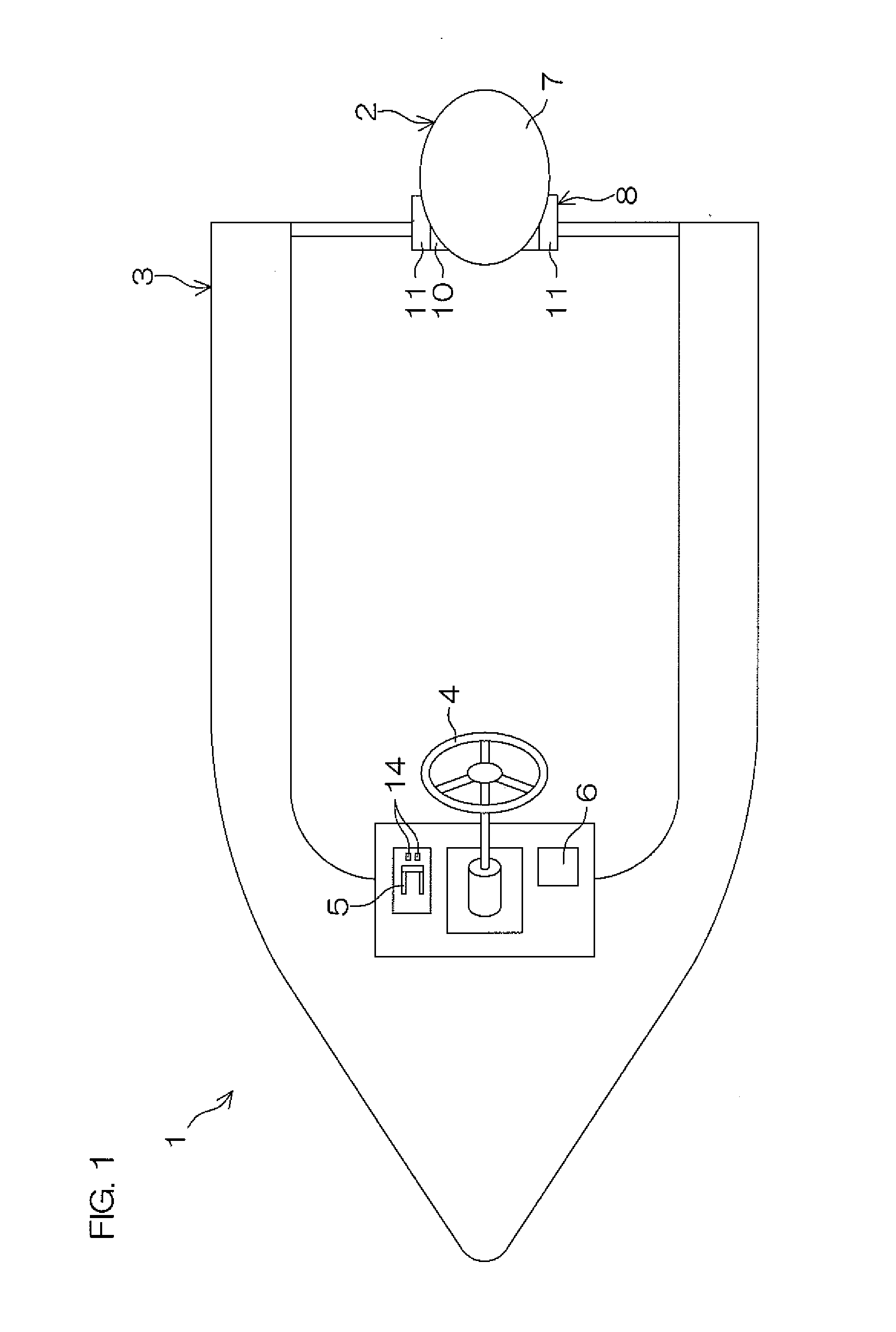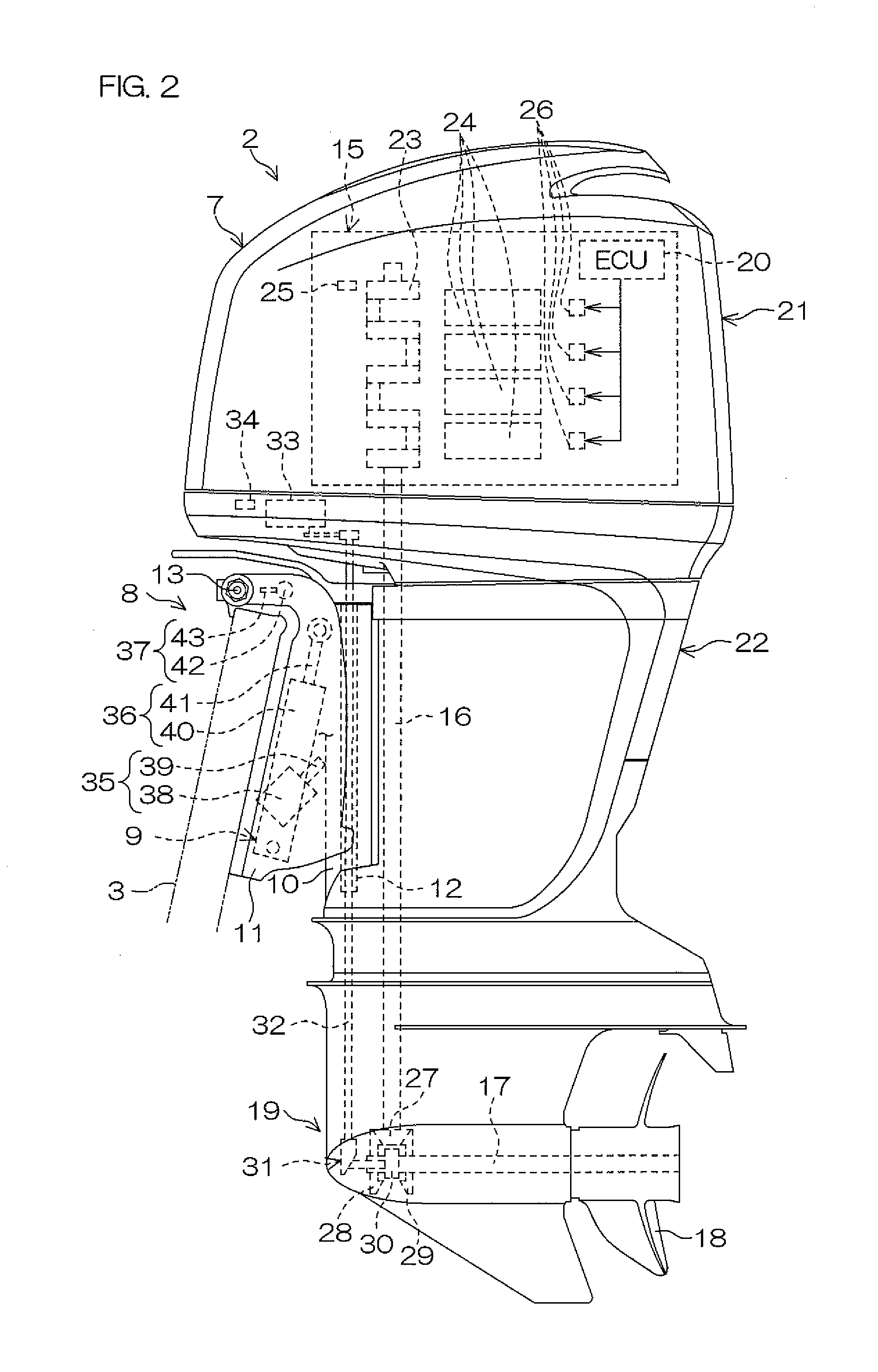Outboard motor and marine vessel including the same
a technology for outboard motors and marine vessels, applied in the direction of marine propulsion, vessel construction, electric control, etc., can solve the problems of large insufficient reduction of the load applied to the tilt rod, so as to achieve the effect of not reducing the engine speed
- Summary
- Abstract
- Description
- Claims
- Application Information
AI Technical Summary
Benefits of technology
Problems solved by technology
Method used
Image
Examples
Embodiment Construction
[0036]FIG. 1 is a conceptual diagram for explaining an arrangement of a marine vessel 1 according to a preferred embodiment of the present invention.
[0037]The marine vessel 1 includes the outboard motor 2 and the hull 3. The outboard motor 2 is attached to a rear portion of the hull 3. The hull 3 is propelled by the outboard motor 2. The hull 3 includes a steering member 4, a control lever 5, and a display portion 6. The marine vessel 1 is steered by the steering member 4 being operated. A speed of the marine vessel 1 is adjusted by the control lever 5 being operated. Switching between forward drive and reverse drive of the marine vessel 1 is performed by the control lever 5 being operated. The speed and other conditions of the marine vessel 1 are displayed on the display portion 6.
[0038]FIG. 2 is a side view of the outboard motor 2 according to a preferred embodiment of the present invention.
[0039]The outboard motor 2 includes an outboard motor main body 7, an attachment mechanism ...
PUM
 Login to View More
Login to View More Abstract
Description
Claims
Application Information
 Login to View More
Login to View More - R&D
- Intellectual Property
- Life Sciences
- Materials
- Tech Scout
- Unparalleled Data Quality
- Higher Quality Content
- 60% Fewer Hallucinations
Browse by: Latest US Patents, China's latest patents, Technical Efficacy Thesaurus, Application Domain, Technology Topic, Popular Technical Reports.
© 2025 PatSnap. All rights reserved.Legal|Privacy policy|Modern Slavery Act Transparency Statement|Sitemap|About US| Contact US: help@patsnap.com



